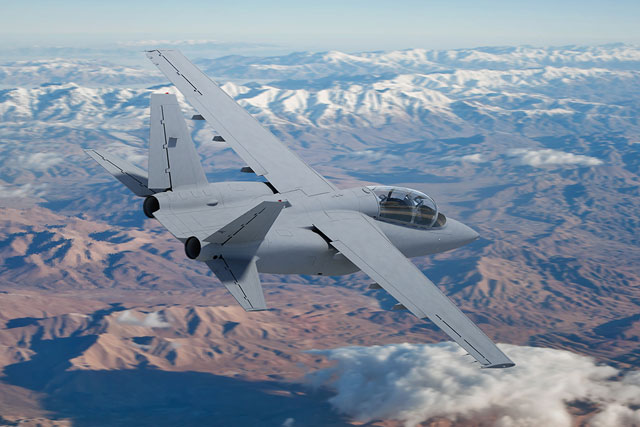Analysts are unsure about what markets Textron AirLand is targeting with its new jet-powered Scorpion light tactical aircraft.
Ostensibly, the new attack aircraft is aimed at the US Air Force, but analysts are doubtful about the service’s desire to operate such an aircraft. Perhaps a more pressing question is the USAF’s ability to afford a new programme given the impact of Congression-mandated sequestration budget cuts.
“Beyond the issue of being able to afford another new programme, many of the missions suggested for such an aircraft might be better performed by RPAs [remotely piloted aircraft],” says Mark Gunzinger, a noted airpower analyst at the Center for Strategic and Budgetary Assessments. “Possibly at less cost than a manned platform if you factor in the need to maintain pilot currency.”
According to Textron AirLand, a joint venture between Textron and AirLand Enterprises, the Scorpion is being designed for irregular warfare, border patrol, maritime surveillance, emergency relief, counter narcotics and air defense operations and building partner nation capacity.
The target market is the USAF’s Air National Guard component and foreign partner nations that cannot afford high-end combat aircraft like the Lockheed Martin F-35.

Textron
“The target market that we have was kind of this hybrid of both ISR [intelligence, surveillance and reconnaissance] and light attack,” says Scott Donnelly, Textron’s chief executive officer. “This aircraft was designed because we saw a very, very large gap between very high performance aircraft and single-engined turboprops.”
Donnelly says that acquiring the Scorpion would cost less than upgrading existing aircraft like the Fairchild Republic A-10 or Lockheed F-16. Additionally, sustainment costs for the new machine are expected to be much lower than either existing warplane.
Oddly, while the Scorpion can be used as a trainer, Donnelly says this version of the aircraft is not aimed at the USAF’s nascent T-X jet trainer programme. It could, however, be modified to fit those requirements with a single engine and swept wings, he says.
Historically, the USAF and most advanced air forces have shunned aircraft like the Scorpion for much higher performance machines, says Richard Aboulafia, an analyst at the Teal Group. It is doubtful that the USAF would have purchased this aircraft even at the height of the two Middle Eastern counter-insurgency wars.
However, Aboulafia suspects that Textron must have specific foreign customers in mind already. “I’m not so sure anyone would be this committed to the programme if they didn’t have some kind of likely launch customer,” Aboulafia says. “I just don’t know who that could be.”
Traditionally, the only solid market for an aircraft of this class has been the UAE. The Scorpion has a reconfigurable internal payload bay that would be able to carry a variety of weapons and sensors or fuel, but the aircraft will not have any dedicated built-in combat avionics such as radars or electro-optical cameras. Total capacity of the bay is 3,000lb (1362kg). The aircraft also carries 9,000lb of internal fuel.
The aircraft is also being designed with six external hard-points that appear to carry a combined total of 6,200lb of weapons or fuel. At max gross take-off weight, the aircraft weights 21,250lbs and will have ferry range of 2,400nm (4440km).
Donnelly says that the demonstrator aircraft that Textron is building will be powered by two Honeywell TFE731 geared turbofans, which provide a combined total of about 8,000lb (35.6kN) of thrust. The engines give the Scorpion a maximum speed of 450kt (833km/h).
Textron is in the final stage of construction on its Scorpion demonstrator aircraft, Donnelly says. The aircraft is expected to make its first flight before the end of the year. If a customer can be found, the aircraft could enter production in 2015, Donnelly adds.
Source: FlightGlobal.com























